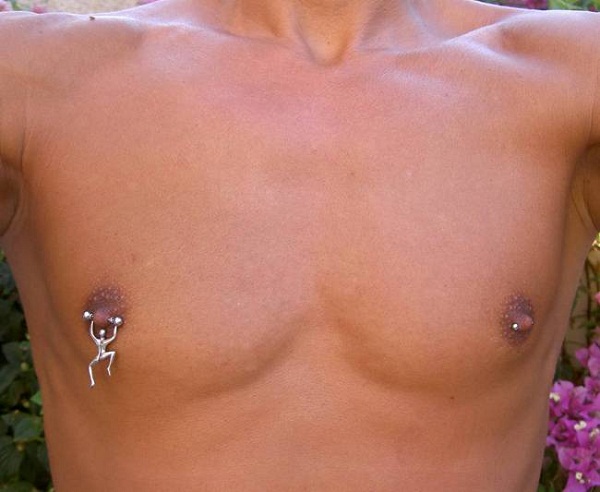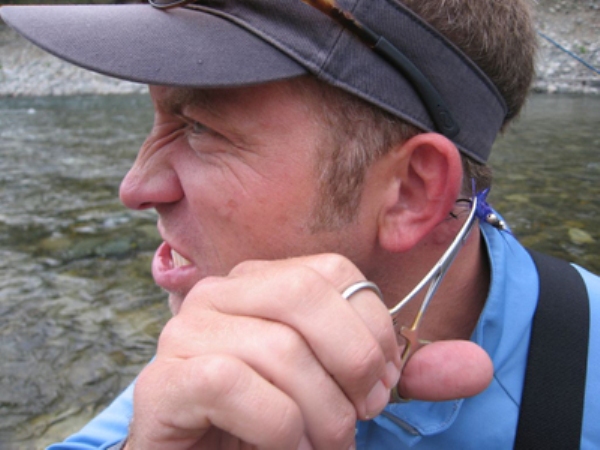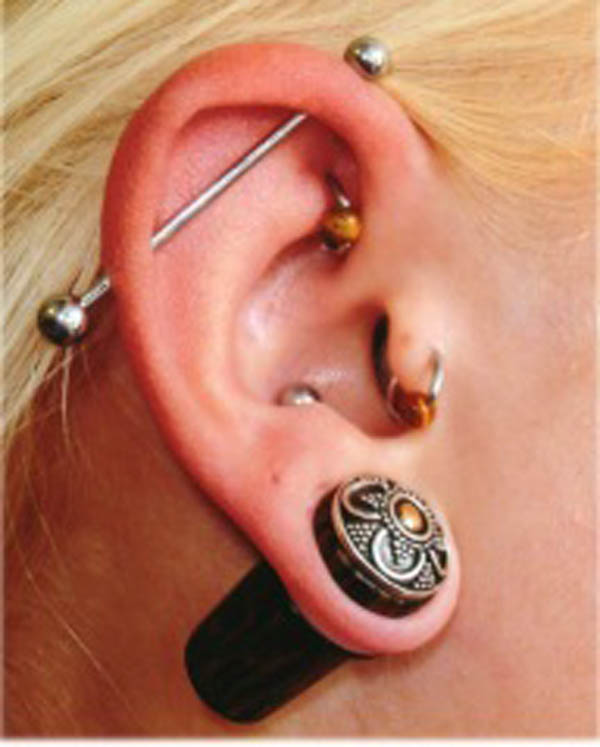
Nipple piercings have become very popular in recent years and lot many people are getting attracted towards it everyday. However, there are certain myths and misconceptions associated with it but with right care and attention, the complications can well be avoided. Here, we have compiled a list of some aftercare tips for nipple piercing. Read on and take care of your piercing.
1. Risk of bacterial infections
One of the serious issues that can arise as a result of nipple piercing is the risk of developing bacterial infections and it can be very dangerous if not treated properly. The common symptoms associated with bacterial infection are increased pain, increased redness, a lump in the breast and increase in the thickness and amount of discharge. Consult your physician or piercer if only the nipple is red and sore. But, you must remove the jewelry only after consulting your physician as this may prevent the draining of pus which may result in the formation of abscess. However, if the swelling and redness has spread to the entire breast, then it may be mastitis and you should take immediate precautionary steps.
2. Use of appropriate cleaning agents
Its very important to clean your piercing regularly in order to prevent the growth of bacteria. However, you must never use alcohol swabs, hydrogen peroxide, tea tree oil, betadine or methylated spirit for the purpose of cleaning your piercing. Although, these compounds are very efficient in killing bacteria but they will also destroy your healing flesh. Paper towels are safest when it comes to drying your piercing as a cloth towel often contain bacteria.
3. Tips for breastfeeding
Many people have the misconception that nipple piercing adversely affects breastfeeding but this is not true because in an average female nipple, there are a number of milk ducts out of which only a few gets destroyed by piercing. There are simple methods which you can employ while breastfeeding, for instance, you can remove the jewelry completely, and have it reopened later. If you don’t want to stay away from your jewelry for such a long time then you can wear a circular bar bell and you’ll have to remove it only when you are feeding your baby.
4. Right clothing
As far as clothing for women is concerned, it will be best to wear a plain bra as this will reduce the risk of catching the jewelry. And it will be much more comfortable to wear a bra at night. For men, it is recommended to put some surgical tape over the piercing while sleeping at night. You must even avoid carrying heavy objects in your breast pockets as it may put pressure on the piercings thus causing strain on your nipples.
5. Say NO to smoking
Smoking is something from which you should maintain a distance if you want to have piercings. Apparently, it may appear that smoking has no connection with piercing but this is not true. It is a proven fact that smoking damages your immune system and lowers the blood circulation to the skin because of which the healing of wounds gets significantly slow. In fact, you must give a second thought to your opinion of having any piercings if you cannot stop smoking.
6. Tightening of skin around the piercing
This is another issue associated with nipple piercings and is known to occur very frequently. Tightening is a term used to describe the condition in which the skin at either or both ends of the nipple starts to grow tightly against the jewelry. However, this is not a very serious condition and can be easily resolved if the piercing is moved or rotated a little with each daily washing. Lavender oil is also very helpful in this situation. Simply apply it, two times in a week.
7. Precautions to be taken while exercising
It is very common to knock the piercing accidentally when doing physical work or playing sports, so you need to be extra careful about it. To prevent such accidents from happening, you can use a bandage to cover it and once you are done with your work, then simply remove it. But do not forget to wash the piercing afterwards.
8. Risks of viral infections
The risks of getting viral infections gets increased in cases of unhealed piercings. Viruses such as HIV and Hepatitis A, B and C can penetrate through a piercing which has not healed completely. These viruses are known to be present in the saliva, sweat, blood, semen and vaginal secretions of the infected person. So it is recommended to avoid any other person’s bodily fluids from contacting your piercing until it has healed completely.
9. Care to be taken while swimming
There is no restriction on swimming while your piercing is healing. However, there are certain things which you need to keep in your mind. For instance, its better to swim only for short period of time while your piercing has not healed completely as this may let your skin become soft and wrinkly. You also need to make sure that the pool in which you are swimming is thoroughly chlorine treated as the water in the pools may often contain bacteria and parasites.
10. Apply lavender oil on the piercings
This oil is very helpful in case of body piercings. Lavender oil lubricates the piercing and thus reduces the scar tissue and avoids tightening. For best results, use it in dilute form.For correct dilution, add 10 drops of lavender oil to 15 mls of sweet almond oil or grapeseed. Use a cotton bud to apply a drop of this diluted oil on either side of the piercing and then remove the excess of oil. Afterwards, move the jewelry back and forth through the piercing so that the oil is applied properly.
11. Intake of vitamins and zinc
Studies have shown that zinc and vitamin C promote wound healing. Intake of about 100 mg zinc and 3000 mg vitamin C daily will definitely do the trick. However, only multivitamin tablets are not sufficient, you need to give proper attention to your diet.




